Above, original art, ‘Rendezvous with 458 Italia’ by Chad Glass.
By Stephen Mitchell
Artwork by Chad Glass
From the Archives, July 20, 2011
Would it be possible to recreate Claude Lelouch’s legendary film ‘Rendezvous?’ Director Stephen Mitchell thought so and he had plan.
A native of Los Angeles, Mitchell studied sound, cinematography and editing with department heads from CBS Cinema Center in Studio City, California. Working as an extra and in small speaking parts in Hollywood films, he practically lived on the set of the television series “Mission: Impossible,” as a family friend directed many of the show’s episodes. Obviously a film career was in the making, but instead of Hollywood, Mitchell’s film career began in France. “I went to Paris because I saw a film by Claude Lelouch—“A Man and a Woman.” It showed me exactly the kind of film I wanted to be making and it wasn’t happening in Hollywood.” We’ll let Mitchell take it from here…
While my interest in films was already well established, strangely enough my passion for cars took root while I was recovering from a head-on collision on the Ventura Freeway. I wasn’t expected to live through the first night but, in the end, my father and I both survived. I read one Road & Track magazine after another, learning and becoming excited about Ferraris, Formula One and the incredible collection of personalities that populated those worlds. It was family friend and mentor Paul Stanley, the director who issued a standing invitation to visit the sets he worked on, who told me I should see A Man and a Woman. (1966) It had impressed him and he figured I would like it, too. That was an understatement.
I can’t say what impressed me most about the A Man and a Woman because there was so much hitting me at once. The beautiful Anouk Aimée with her reserved sensuality so different from that of American actresses cast a spell on me that never went away. The scenes of Jean-Louis Trintignant testing the Ford GT40 and the rally Mustang at Montlhéry (where the Ferrari GTO s/n 3987 I would later own won its first race driven by Ricardo and Pedro Rodriguez on October 21 1962) definitely raised my pulse as did the section of the film dealing with the race at Le Mans. Even the hospital scenes resonated for me having “lived’ there for a time not too long before. I loved the scenes of the Monte Carlo Rally.
A Man and a Woman was the first French film I ever saw though I also liked films like Jean-Luc Godard’s Breathless, Jean-Pierre Melville’s Bob le flambour and Le samouraï along with countless Italian films including Dino Risi’s Il Sorpasso (The Easy Life) and Federico Fellini’s 8½ (Otto e mezzo) which also featured Anouk Aimée. A Man and a Woman was innovative in presenting its story in a non-linear fashion with a mix of color and black and white footage. It was almost a documentary on cars and human relations in the way it came across to me. That film set me on a path to make my own first film years later in France and in French.
I had made the decision that I wanted to make French films so off I went to France. I wasn’t living in Paris for too long before I was told of a legendary short film shot by Lelouch. Friends in Paris who knew of my fascination with Lelouch and his films asked if I was aware of C’était un rendezvous. Surprised to learn that I hadn’t heard of it, they told me the story. Claude had risen early one morning, attached a movie camera to the front bumper of his car and sped half-way across Paris running red lights, dodging cars and pedestrians and speeding down the Champs-Élysées to finally make his way to the Butte Montmartre where one finds the Basilica of the Sacred Heart. It was an exciting story to hear but it would be many years before I would actually see the film thanks to the Internet and YouTube.
Though the film played in cinema houses as a short subject preceding the main presentation, there was no money to be made with Rendezvous. Making it was the act of someone who loved both filmmaking and cars, which describes Lelouch very well. The fact that it also describes me very well was not lost on me.
While living in Paris, I had gotten to know Jean Collomb who was Claude Lelouch’s lighting director on some of his most famous films. Jean was introduced to me by mutual friends and, during the time I lived in Paris, I came to meet many of the people who had worked with Lelouch—Lino Ventura, Françoise Fabian, Philippe Léotard, Charles Gérard, André Dussollier, Philippe Labro, Janine Magnan and Jean Mermet but I never met Lelouch himself. One of the things Jean told me was that Lelouch was not one to apply for shooting permits preferring to just show up and film the scene, the less said the better. This approach went wrong when Lelouch shot a scene on the Champs-Élysées where an actor dressed as a cop is shot and falls to the ground just as a bus load of real CRS riot police drove by (you know, the guys with the machine guns), but that’s a story for another time. All this goes to say that Lelouch did not bother with getting a shooting permit, the obligatory retired traffic cop or any sort of crowd control. This was guerrilla film-making born of the post-war Nouvelle Vague at its best.
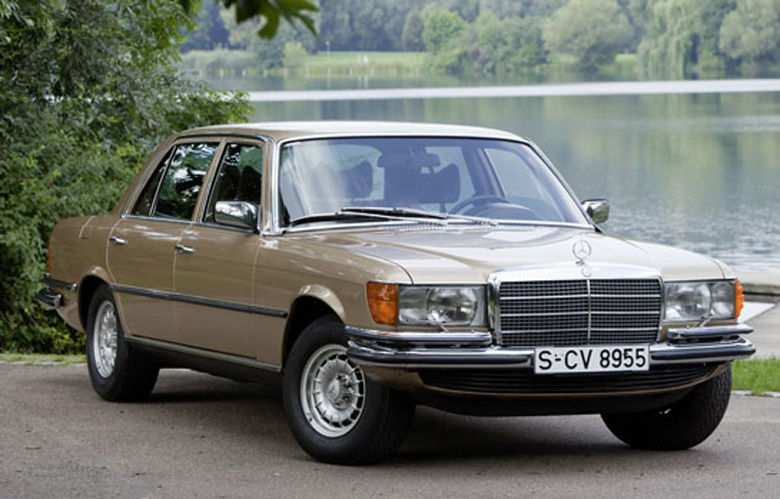
Dubbing a Ferrari into the soundtrack of Rendezvous was a stroke of genius for it added glamour and mystery. The reality was that a Mercedes similar to this one was used to film the run, not a Ferrari.
Lelouch set off in his Mercedes 450 SEL 6.9 on a morning in August 1976. Many–including me–believed, upon seeing the film that Claude was driving a Ferrari but he wasn’t. The belief came about because someone had expertly added and matched the sound of a Ferrari to the film’s soundtrack in post production. The one concession to safety was to position Elie Chouraqui, who worked as Lelouch’s assistant director and later directed his own films, near the guichets du Louvre with a walkie-talkie to warn Lelouch as he was about to cross the rue de Rivoli if there was any traffic. Fortunately there wasn’t, because the batteries on Chouraqui’s radio were dead.
35mm movie film comes in ten-minute rolls which meant that Lelouch had that much time to get to Montmartre or he would run out of film. At one point, as Lelouch nears Montmartre, he begins a turn into a street that he quickly aborts–a delivery truck was blocking the way and the film would have rolled out. Improvising, Lelouch carried on and took another route past the Cimetière de Montmartre (where I shot scenes for my movie Point of Departure), across the Place du Tertre ending up in front of the Sacre Coeur to meet his date (played by his wife) all before the ten minutes expired.
When the film played in cinema houses to enthusiastic audiences, it came to the attention of the police who summonsed Lelouch to the Préfecture de Police. In his autobiography Itinéraire d’un enfant très gâté (Itinerary of a very spoiled child), Lelouch describes the following exchange with the police official. “Give me your driving license,” Lelouch was ordered. A moment later, it was handed back to him as the official told him, “I promised I would take your license, but I didn’t say for how long,’ adding, “My children love your film.
The one constant in every Lelouch film is the obvious love of film-making. Watching any of Claude’s films, one gets the sense of how much fun he had making them. This was never more evident then with C’était un rendezvous. If you don’t know his work, may I suggest Toute une vie (And Now My Love), L’aventure, c’est l’aventure (Money, Money Money), Les Misérables and Roman de gare (Crossed Tracks). What , A Man and a Woman , C’était un rendezvous and all the other Lelouch films show us is what we go through to find, be and stay with those we love—even risking jail with a high-speed run across Paris.
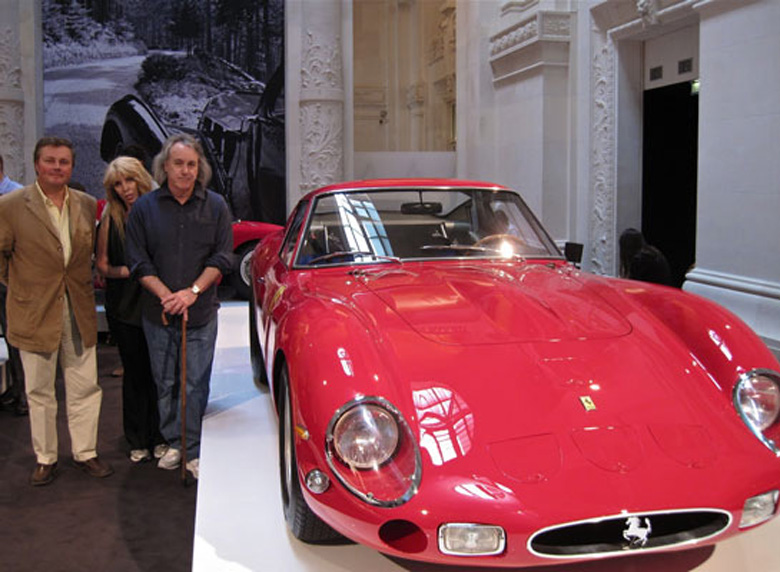
‘Rebel Rebel’ author Marc Sonnery, far left, Carrera Panamericana co-procucer Jeanetta Dumouchel and Stephen Mitchell next to the ex-Mitchell GTO, now owned by Ralph Lauren.
As a filmmaker, Lelouch has had a great influence on me and my own exploits. My late teen years were characterized by a passion for movies and cars—at 16 I bought an E-Type Jaguar, at 17 a Ferrari Berlinetta Lusso and by 18 or so, I was driving a Ferrari GTO. In an earlier harmonic of Rendezvous, I drove my Lusso from Woodland Hills to Las Vegas in two hours, fifty-five minutes though without a camera mounted on the bumper. I raced my GTO on Mulholland with ABC series actor Peter Helm and friends in an episode that was filmed and could have been inspired by Claude Lelouch. My first film was titled—Montmartre—shot in France and in French no less. Extracts of it can be seen on YouTube Watch Montmarte When Lelouch races past La Place du Tertre, I can see where a scene from my Montmartre was shot.
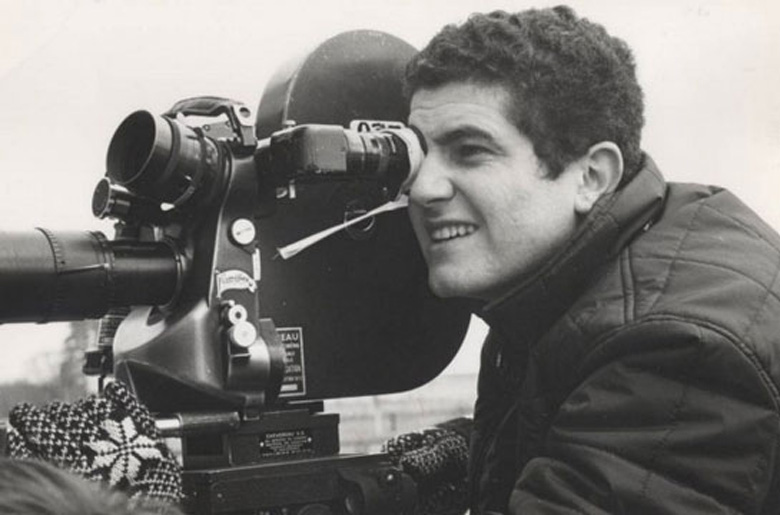
Claude Lelouch in the 1960s. Perhaps he’ll take up on Stephen’s offer to recreate Rendezvous in a Ferrari Italia?
Now almost 75, (now 81) Claude Lelouch continues to make films in his unique style. I too am still making movies, my last was shot in Paris, Cannes, Milan, Venice (Italy) and Monaco. More recently, I shot a documentary about the original Carrera Panamericana road races run from 1950-54 Watch youtube and I continue to work on a project about the GTO. I was privileged to be a co-producer on Addiction Incorporated, a documentary produced and directed by Charlie Evans Jr. I love documentaries but soon, I will be writing and directing another movie. Paris continues to be my second home and my first love. I was just there after attending the Cannes Film Festival and I am looking into establishing a film school somewhere in France.
As for C’était un rendezvous, today it is more popular than ever—a touchstone for those who love cinema, cars, Paris and adventure. The Internet and venues such as YouTube have given a life to the legend of Rendezvous which will be shared by our children and theirs. It won’t get old; defiance never does and audacity never will.
Could Rendezvous be made today? Yes and no. Yes, we could do it. No, I fear it would not have the same successful result. Surveillance cameras would be onto us before we reached La Place de l’Étoile and a police helicopter would be descending upon us by the time we reached Place de la Concorde.
If the opportunity arose, what car would I choose to make the run? A 458 Italia, I think. I’d love to hear the sound of the tires on those Parisian cobblestones and the echo of the Ferrari’s engine bouncing off the walls of those narrow streets. Imagining how such an adventure might play out, my friend Chad Glass, who did a superb job of illustrating the poster for my documentary Carrera Panamericana (1950-54) has sketched “my” Ferrari 458 Italia as we defy the laws of physics and Parisian traffic in a re-creation of Rendezvous.
Would I really make the attempt? Absolutely and I’d ask Lelouch if he’d like to go along for the ride.
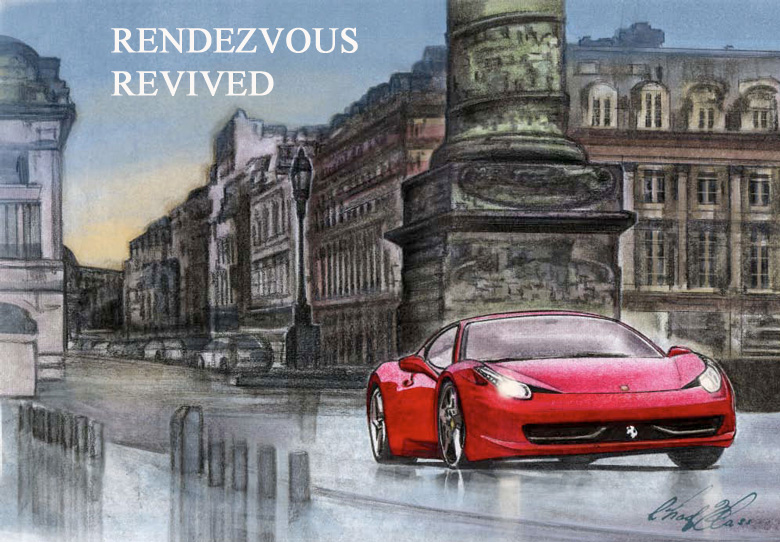
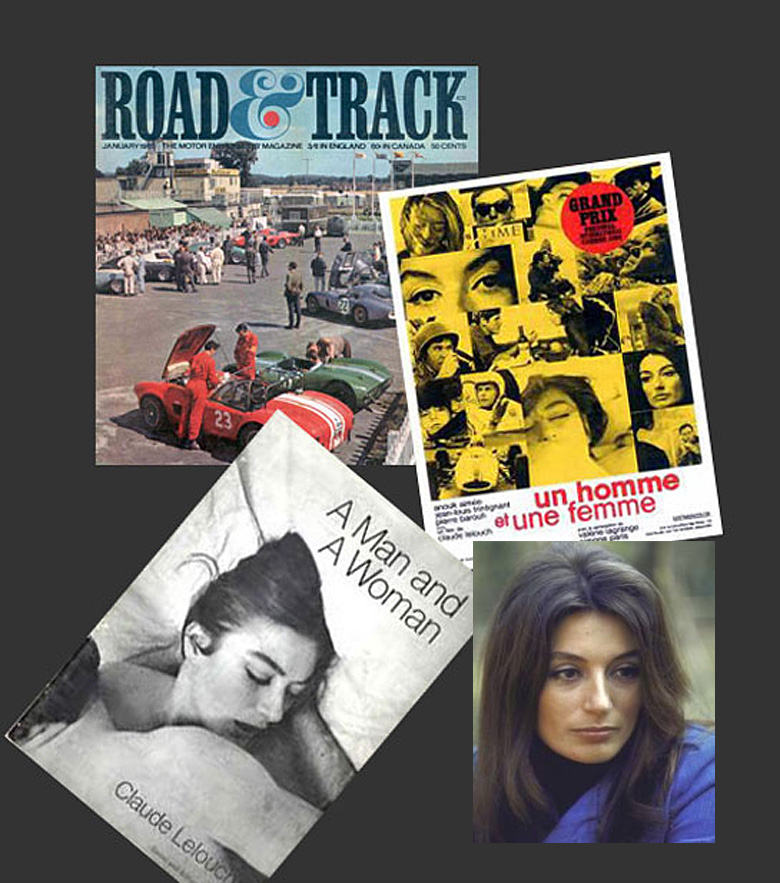

As the story goes, Lelouch had only two friends with walky-talkies (no cel phones at the time) at two strategic locations (blind crossings) (I think, one at Rue de Rivoli, and the other one, I do not remember where) to tell the driver if the road was clear. At all other lights, they assumed the crossing time (at more then 100 mph) would be so short the risk of accident was “small”, as the traffic was light at 3 am.
Rhey fooled me, I always thought it was a racing Dino. I also wonder why no automaker has made a simlar commericial–maybe because the car is not on camera throughout.
This film reminds me of a never to be repeated event in 1982.
My wife and I were invited by the French Ferrari Club, to celebrate 20 years of the GTO. See the book “I Love GTO” for the full story.
We drove to Paris in our GTO where we met the other owners, before setting off to Mas Du Clos circuit for some fast laps.
To get out of Paris to the AutoRoute, we had a high speed Police motorcycle escort.
These guys were amazing, it was just like the film – They cleared the way for us in no uncertain manner, through red lights, a short cut the wrong way down a one way street , all done at high speed.
They enjoyed it as much as we did.
Back to the film – – – –
shortly after I first saw rendezvous we were in Paris and I kinda measured the street striping and figured out lelouch wasn’t going all that fast…seems like it came out about 75mph where the stripes are ‘timeable.’ and I saw ‘a man and a woman’ the day before we got on the boat to go to europe with a corvette. talk about inspiring!